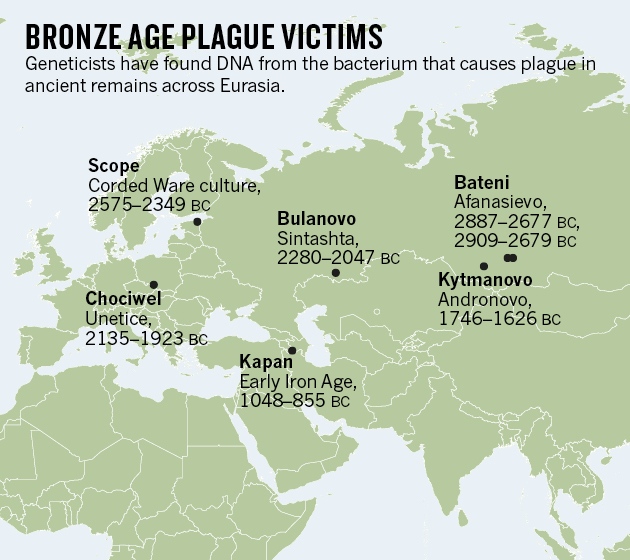found on: indo-european.eu
The adaptation to fast life histories as the authors call it is interesting considering what we know of the DNA of the steppe cultures. Fertility was very high, and adolescent women (10-14) seem to be quite frequent among the dead. The authors suggest that this is due to trend towards very low maternal ages in the bronze age steppes, which lead to an elevated risk of death during childbirth.
Indicators of physical trauma are almost completely absent from Yamnaya to Potapovka. They become extremely common in the Iron Age however.
The authors also suggest that the people buried in Kurgans did not frequently reach a high age or even biologically maturity, suggesting that the association of Kurgan burials with tribal chiefs and such doesn't really hold.
Link: https://onlinelibrary.wiley.com/doi/pdf/10.1002/ajhb.23129
Traditional skeletal stress indicators and trauma were uncommonamong KA-5 people and contemporary Samara Valleygroups. The lack of trauma does not support the view thatthe MBA was a period of social strife. When the absence ofskeletal stress markers is considered with high subadult mortality,acute illness from which these individuals did notrecover suggests elevated frailty levels. The general absenceof statistically significant relationships for these skeletalmarkers between the KA-5 and Samara Valley kurgan samplesindicates a regionally homogenous long-term relationshipwith the environment, regardless of a climatic shift orunpredictability. In contrast to the paucity of caries, dentalcalculus and periodontitis were ubiquitous, though rarelysevere, among all age groups including children and adolescents.The synergy between the poor oral health of themother and the health of her unborn children predisposeschildren to premature or low weight births, placing them atrisk of early death or a lifetime struggle with health. An optimalweaning program at KA-5 promoted children’s healthand nutrition, but following weaning subadults were at riskfor physiological insult and many succumbed quickly. Whypeople congregated in these complex settlements remains aquestion, but there was little skeletal evidence for chronicphysiological stress, nutritional deficiencies, physical violence,or unintentional injury. Based on these skeletal samples,achieving old age or even biological maturity at KA-5and during the MBA was not a regular occurrence for thoseselected for kurgan interment. A fast life history, characterizedby high fertility and high subadult mortality, suggestsan adaptive response to a less hospitable or unstableenvironment.
The adaptation to fast life histories as the authors call it is interesting considering what we know of the DNA of the steppe cultures. Fertility was very high, and adolescent women (10-14) seem to be quite frequent among the dead. The authors suggest that this is due to trend towards very low maternal ages in the bronze age steppes, which lead to an elevated risk of death during childbirth.
Indicators of physical trauma are almost completely absent from Yamnaya to Potapovka. They become extremely common in the Iron Age however.
The authors also suggest that the people buried in Kurgans did not frequently reach a high age or even biologically maturity, suggesting that the association of Kurgan burials with tribal chiefs and such doesn't really hold.
Link: https://onlinelibrary.wiley.com/doi/pdf/10.1002/ajhb.23129



